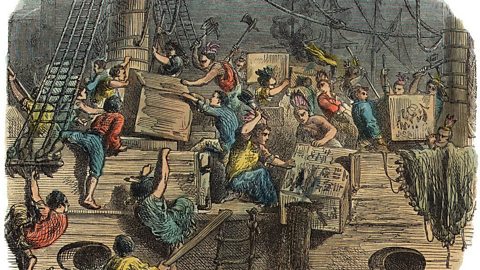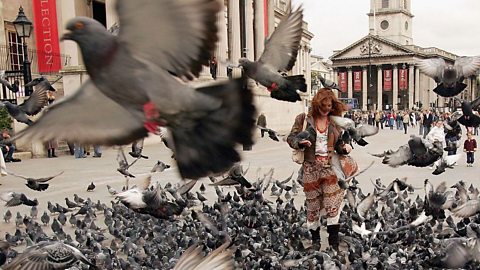The continuing debate on Brexit was interrupted by a naked protest in the Houses of Parliament on 1 April, when climate change protesters stripped down and glued themselves to the windows of the public gallery.
Throughout history, people have been determined to get their views heard. And while banners and placards are classic demonstration items, some campaigners choose to go down slightly different routes.
From picking salt crystals to hiding in cupboards and brewing tea in the sea, here are five unusual protests (and their consequences) from the distant and more recent past.
Suffragette change of residence

Parliament is no stranger to protest. In 1911, women weren’t allowed to vote, and campaigned to change this.
A census was being taken at the time, asking women to record very personal details about themselves (where they lived, their occupation and even their fertility). Many were furious, but one woman decided to have a bit of fun with it.
Emily Wilding Davison, who is more well-known for the tragic end she suffered fighting for the cause, locked herself in a broom cupboard in Westminster, in order to be registered as a resident of the Houses of Parliament on the form.
It’s quite a feat to have your address registered as: “Found hiding in the crypt of Westminster Hall since Saturday”!
A tea party for… a few hundreds
It was the only tea party in history where nobody minded their manners - simply because tensions were running so high.
American patriot protesters were vehemently against the UK parliament’s Tea Act of 1773, which allowed the British East India Company to sell imported tea from China in American colonies without paying taxes.

This was seen as violation of rights by some Americans, and when a shipment of tea from the same company arrived in Boston Harbour on 16 December that same year, the vessel was attacked. Tea was thrown into the water by protesters dressed as Native Americans, determined not to see it turn into profit for the British company.
It was also seen as the first step towards the American Revolution, which culminated in the nation gaining independence from Britain to become the United States of America.
Rotting veg

In France, protest and revolution have a long and infamous history. In recent years, it seems protesters have tried to get more and more creative.
Incensed at the low prices of food and the soaring prices of fertiliser, in 2014 a French farmers union took to the streets, to show the world just how much they thought the prices stank.
Essentially, they threw manure and slurry (rotting veg mixed with other gross things) on the streets and at a water treatment office. SacrГ© bleu!

Gandhi’s salt march
A salt shaker on your dinner table may seem unassuming, but in years gone by it could have been seen as a symbol of protest.
British rulers in India established a law in 1882 that forbade Indians from collecting or selling salt. In an act of civil disobedience, Mahatma Gandhi set out on a march in the early 1930s along the seafront to collect salt from the shore. By picking up one crystal, he had broken the law.
Thousands followed suit, and it eventually led to Gandhi’s arrest. Salt shakers suddenly seem far less ordinary.

Seven-foot-tall pigeons
It’s enough to make Mary Poppins weep. An outcry ensued when Bernard Rayner, the last pigeon feed seller operating in Trafalgar Square, was set for eviction in 2001 as part of a plan to reduce the number of birds at the popular London tourist spot.

His supporters didn’t take the situation lying down. Quite the opposite, in fact. They protested against Greater London Authority by dressing as seven-foot-tall pigeons and blocking the traffic around the square.
It was to no avail, however. Mr Rayner gave up his pitch following an out-of-court settlement, ending his family’s half-century association with feeding the birds.
This article was published in April 2019
Who was Emmeline Pankhurst?
KS1 History

Gandhi and Indian independence
The peaceful protestor at the heart of a nation leaving the Empire.

Six women who stood up to be counted
They spoke out on civil rights, sports, suffrage and other issues.
